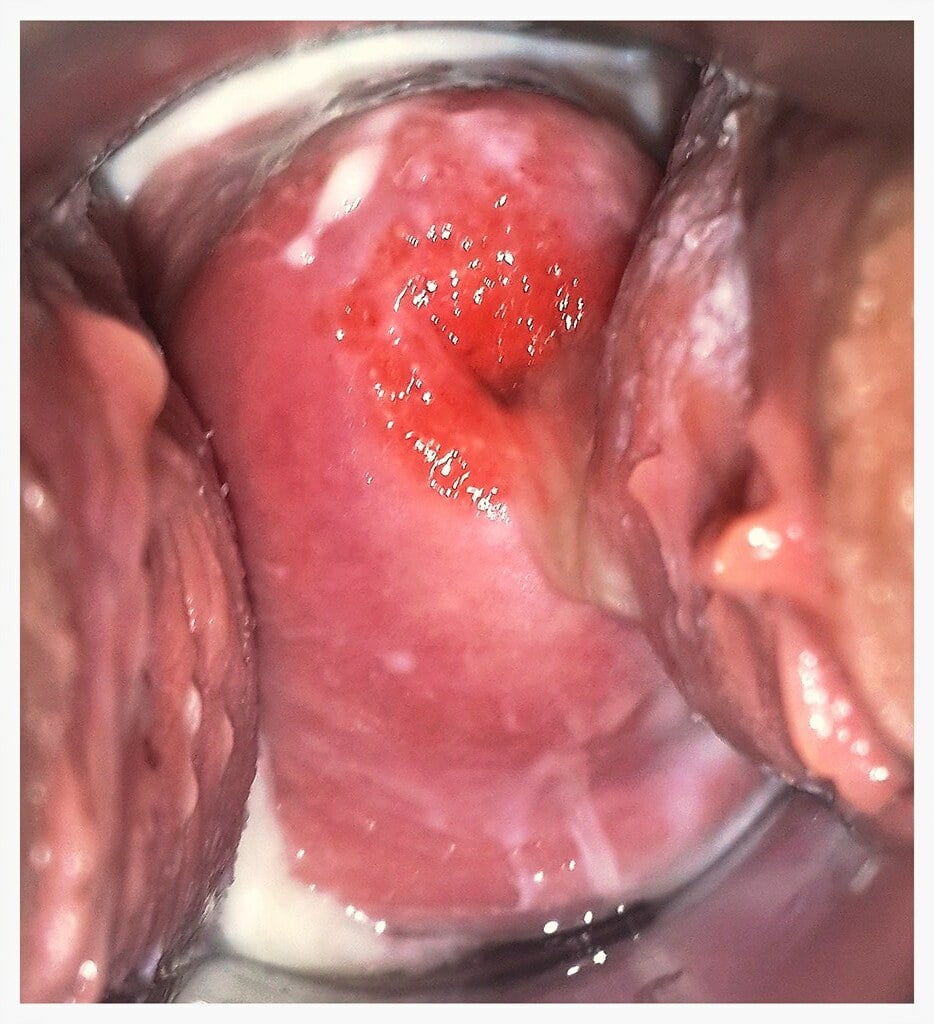Cervical Ectropion
What is Cervical Ectropion? Usually a fairly common occurrence in women of childbearing age, Cervical Ectropion can be a source of concern when experienced by a woman with no prior knowledge because of the appearance of the cervix. Also called cervical eversion or cervical ectopy, the condition describes the way the cells of the cervical… Read More
Top Doctors For Cervical Ectropion Treatments
Top Hospitals For Cervical Ectropion Treatments
Cervical Ectropion
What is Cervical Ectropion?
Usually a fairly common occurrence in women of childbearing age, Cervical Ectropion can be a source of concern when experienced by a woman with no prior knowledge because of the appearance of the cervix. Also called cervical eversion or cervical ectopy, the condition describes the way the cells of the cervical canal appear on the outside of the cervix, growing outside of the cervical canal. It gives the outer surface of the cervix a reddish or inflamed look and is sometimes responsible for irregular bleeding.
Where the inner part of the cervix, called glandular cells, meets the outer part, called the epithelial cells, is the transformation zone. The cervix is the part of the female reproductive system where the uterus meets the vagina. The transformation zone is the area that appears as a reddish inflamed patch; a chief marker of the condition.

What Causes Cervical Ectropion?
The major cause of cervical ectropion has not been specifically identified, but research has shown that it is mainly due to hormonal fluctuations, especially changes in oestrogen levels. With the increase in oestrogen levels experienced in adolescents or in women taking oestrogen-containing contraceptives, chances are high that they will experience cervical ectropion.
Pregnancy and puberty also bring changes in hormonal levels, and women in this category might also experience cervical ectropion. Ovulation brings a spike in oestrogen levels. The condition is rarely seen postmenopause because there is little to no chance of oestrogen increase naturally.
The condition has not been linked to any other condition like cervical cancer, and it is generally considered harmless and is not a health concern.
What are the Symptoms associated with the condition?
Many women with cervical ectropion usually do not experience any symptoms and might not even be aware of the condition until they go for a gynaecological cervical screening. Due to the harmless nature of the condition, it might not be mentioned in a routine medical visit. For those that experience the symptoms, they vary from mild to severe in rare cases. Some of the symptoms experienced include the following:
- Light vaginal discharge containing blood or mucus
- Spotting between periods
- Bleeding during or after a pelvic examination
- Bleeding and pain after sexual intercourse
- Pain in the pelvic region
The aforementioned symptoms are usually experienced in other conditions and are not restricted to cervical ectropion. In cases where these symptoms are experienced collectively or severely, endeavour to see a healthcare professional like a gynaecologist. Upon clinical examination, they will determine the correct diagnosis for the condition to know if it is serious or not serious.
Diagnosis
Most women with cervical ectropion do not know they have it because of the usual asymptomatic nature of the condition. In most cases, it is discovered upon a routine pelvic examination by the gynaecologist or during a pap smear. Upon examination, the cervix appears reddish and rougher than it should be, thus calling for more observation and further tests to arrive at a confirmation. The diagnostic tests carried out to arrive at a specific diagnosis vary, and some of them include the following:
- Pelvic examination: This is usually done during a visit to a gynaecologist. Observation of the cervix shows a reddish inflamed area. It does not form a final diagnosis of the condition, especially in cases where other symptoms appear.
- Colposcopy: Using a special magnifying instrument called a Colposcope, the doctor examines the cervix for any sign of abnormality or redness to indicate cervical ectropion.
- Pap smear: A pap smear or pap test is usually carried out when testing for HPV which is the human papillomavirus. It involves taking a sample of cervical cells to check for precancerous or cancerous cell changes. This is necessary to rule out any other symptoms that might have been observed.
- Biopsy: Biopsy involves the collection of a cervical tissue sample to test for any form of abnormality like cancer. This can be done during a colposcopy, and one can experience cramps during the procedure.
Differential Diagnosis
Where symptoms are noticed, without proper diagnosis, they can be confused with other diseases that present similar symptoms like vaginal bleeding, discharge, pain, etc. Some of these diseases include the following:
- Cervical cancer.
- Pregnancy
- Infectious cervicitis.
- Chronic cervicitis
- Vulvovaginitis.
- Desquamative inflammatory vaginitis is common in perimenopausal women.
- Cervical intraepithelial neoplasia (CIN).
- Pelvic inflammatory disease.
Treatment
Cervical ectropion usually requires no treatment because of the nature of the condition. In most cases, there are no symptoms, and the condition usually resolves on its own. The first line of treatment is usually the withdrawal of hormonal drugs like oral contraceptives if in use. This will help to balance the hormones that have been noted to encourage this condition. In cases where the symptoms persist, other forms of treatment can be taken to manage the condition.
Cauterization:
This is usually an outpatient procedure where the patient is placed on anaesthesia for the procedure to be carried out. It is typically a painless way of removing the glandular cells outside the cervix. It involves three different procedures, either of which can be used by the doctor.
- Diathermy: This is also known as electrocautery or thermocautery because it involves the use of heat to cauterize.
- Cryotherapy: Cryotherapy involves freezing to cut off the abnormal cells causing ectropion. It has been observed the quality of the cervical mucus improves after treatment with cryotherapy. (1)
- Silver nitrate: This is another method of cauterizing the glandular cells.
Vaginal suppositories:
Boric acid vaginal suppositories are mostly prescribed as they help to reduce the pH levels of the vagina and lessen the symptoms. Polydeoxyribonucleotide vaginal suppositories also aid re-epithelialization, thus leading to a reduction in the size of the ectropion and reducing the intensity of the symptoms. Alpha interferon suppository has an immunomodulatory effect and prevents proliferation of the glandular cells.
Laser therapy:
Tuned to specific wavelengths, laser therapy involves the use of powerful light beams focused directly on the area to be cut off or destroyed. In the treatment of cervical ectropion, carbon dioxide laser beams are used to destroy the glandular cells encroaching outside the cervix. Laser therapy provides the advantage of better precision, better healing, and less pain post-procedure. (2)
Others:
Other treatment options that can be applied include the following: (2)
- Microwave tissue coagulation
- Autologous platelet-rich plasma application
- Focused ultrasound
Post Treatment Observations
The cervix will require some time to heal after the procedure. Patients are advised to avoid intercourse and not to use tampons for at least four weeks after the treatment to avoid infections. The doctor will schedule follow-up appointments after the treatment to monitor improvements.
Upon a successful treatment plan, there is usually a marked improvement in the colour and outlook of the cervix and improved quality of cervical mucus. There might be some mild discomfort for a few days and spotting or discharges for a few weeks.
The doctor should be alerted if any of the following symptoms are noticed post-treatment as they could be pointing to a severe complication.
- Vaginal discharges with bad odours
- Post-treatment bleeding lasting longer than usual
- Postcoital or Intermenstrual bleeding
FAQ
Cervical ectropion can resolve on its own. It usually requires no treatment, especially when asymptomatic or the symptoms do not affect the daily activities of the patient. Sometimes, a simple change of contraceptives is enough for it to go away.
Though it is common among women of childbearing age, it does not affect fertility. Though symptoms where they occur might cause patients to be concerned, they are advised to speak with their doctors for a proper diagnosis.
Cervical ectropion is harmless and has no link to cervical cancer. The reddish nature of the cervix and other symptoms might prompt further investigation, but it is not an early stage of cancer.
Reference
- Çekmez Y, Şanlıkan F, Göçmen A, Vural A, Türkmen SB. Is Cryotherapy Friend or Foe for Symptomatic Cervical Ectopy? Med Princ Pract. 2016;25(1):8-11. [PMC free article] [PubMed]
- Aggarwal P, Ben Amor A. Cervical Ectropion. [Updated 2023 May 31]. In: StatPearls [Internet]. Treasure Island (FL): StatPearls Publishing; 2024 Jan-. Available from: https://www.ncbi.nlm.nih.gov/books/NBK560709/






















































































































































